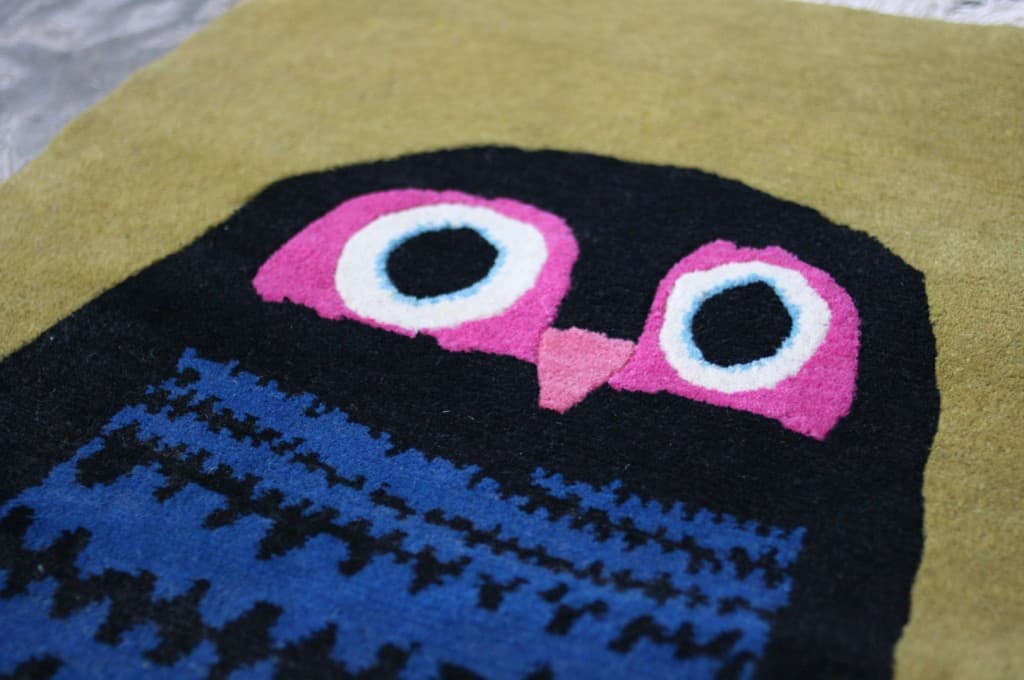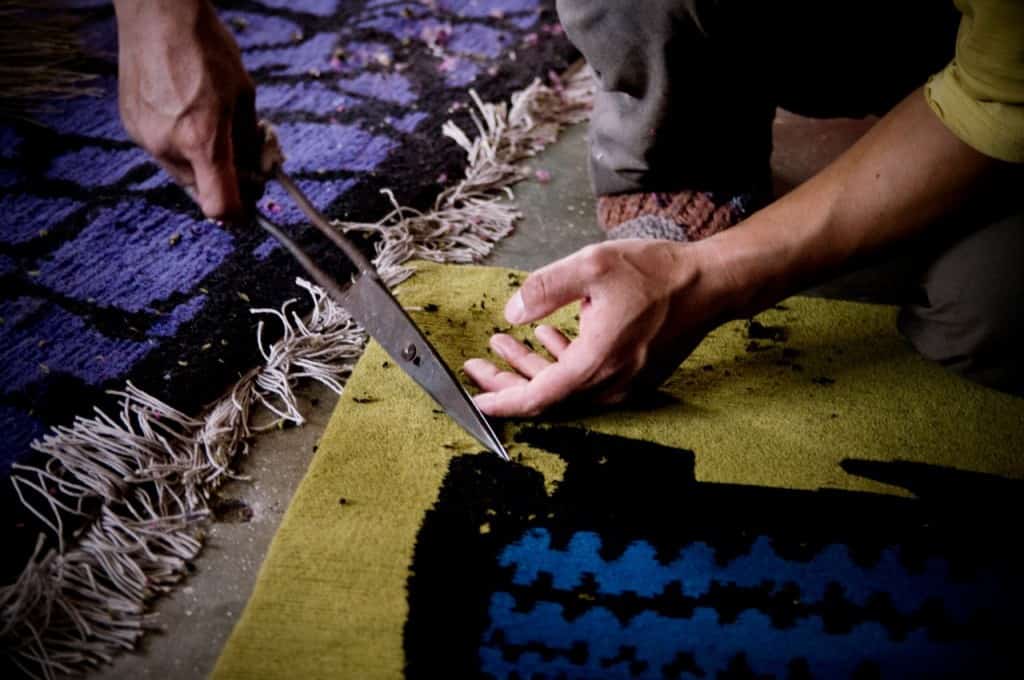Interview for PIVOT Dublin Feb 2012
I had been working with fair trade for the past seven years in London, and i admired the development work that fair trade was doing and wanted to get more involved. I took 8 months off to visit India and Nepal and see if i could create something together directly with the producers. I travelled around to see what could be made in fair trade that would best use design together with craft. The main reason I set it up was to help out the development project, their crafts are of very high standard but the design is not at the same level and so it made sense to rope my designer friends into this too. As it turned out there were plenty of things that we could work on and this has develope
I noticed that there was an opportunity when I posted images of the rugs on my blog. People from all over the place emailed to enquire about buying them and as my blog is followed by many designers people also wanted to ask if they could design their own one. I spent a frustrating year unable to do anything as i didn’t have the facility to receive payment for customers and at the same time the complex bank charges/import duties and logistics made it prohibitive for other designers to order single rugs and have them shipped. I spoke about this to my nepalese friends and
Daddy be good Interview 2011
An Interview with daddy be good here
Interview with Safia Minney People Tree 2008
1) How long have you been working with People Tree? What motivated you to use your creativity to promote Fair Trade and environmental issues?
Ive been working with People Tree for 4 years. I had wanted to become involved in the fair trade movement since travelling in India and Nepal for a summer while i was in college.
new web pick interview 2008
Tell us a little bit about your background?
I studied graphic design and illustration in the National College of Art in Dublin, Ireland. While i was there I was always trying to get work in magazines and other bits and pieces here and there. After college I ended up traveling around and about in Asia for two years before moving to the UK in 2004 to work for the London based animation Studioaka. I left there to work again on smaller more creative freelance projects. I illustrate for several magazines and newspapers I have been making hand-made prints and designs for clothing and stationery with the fair trade company People Tree.
Who are your main inspirations? / What are your influences?
At the moment I am in Korea working on a childrens picture book that I wrote also.
I remember I saw Tomato (London based design group ) give a talk about design and they said that as a designer ‘you get the work that you do’, which i think is a really good piece of advice.
If you start out doing fashion illustrations and have nothing more than fashion illustrations in your portfolio or on your site you’ll find it hard to get hired to do editorial pieces.
Art directors are naturally unwilling to take a risk so you’ll find that the only way to get out of that side of the industry is to take a bit of time off and create the work yourself.
The best thing to do is to work in your spare time and find a way of working that you like and enjoy and then take that to the art directors.
A friend of mine had an agent for Children’s book illustration. She advised him to produce work in particular styles that she thought would sell, so he followed her advice but he still found it hard to get work and he didn’t enjoy doing work in a forced style. It wasn’t until he produced a body of his own work that he felt comfortable with did he start getting serious work.
If your work is unique you definitely will get better and more interesting work.
Having said all that probably the most important thing to do is get your work out there, I went to college with a guy who does really really great work but he is quite shy about showing his work off and as a result hasn’t got half as much work as he should be getting.
What is your most favorite commercial design of our own?
Im quite proud of the recent cover I did for Luce Irigaray’s book ‘sharing the world’. Also one image I did last year for the guardian. (how to turn)
Name some designers you like the most?
Interview with Kim Harte 2010
How did the idea for A Bit Lost come about?
I had done an image of some birds in a forest that i really liked and wanted to develop. The birds were quite richly patterned and the forest was a complex web of undergrowth with little elements hidden in it. I really wanted to do a simple story for them that could feature the forest and all its hidden elements and simply introduce us to the animals of the forest, i loved books that are richly illustrated as a child that have hidden elements in them that you can find later.

